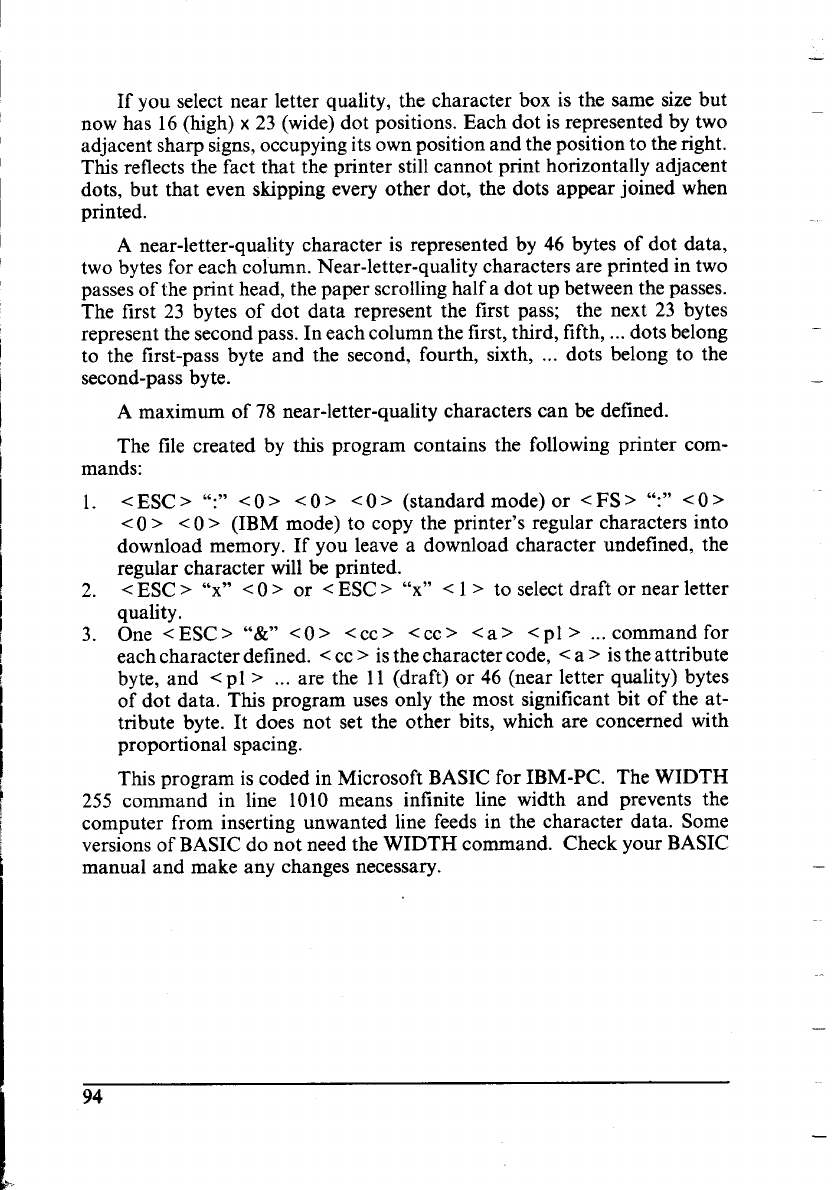
—
If you select near letter quality, the character box is the same sizebut
now has 16(high)x 23 (wide)dot positions.Each dot is representedby two
adjacentsharp signs,occupyingits ownpositionand thepositionto the right.
This reflectsthe fact that the printer stillcannot print horizontallyadjacent
dots, but that even skipping every other dot, the dots appear joined when
printed.
A near-letter-quality character is represented by 46 bytes of dot data,
two bytesfor each column. Near-letter-quality characters are printed in two
passesof the print head, the paper scrollinghalfa dot up betweenthe passes.
The first 23 bytes of dot data represent the first pass; the next 23 bytes
representthe secondpass.In eachcolumn the first,third, fifth, ...dots belong
to the first-pass byte and the second, fourth, sixth, ... dots belong to the
second-passbyte.
A maximum of 78 near-letter-qualitycharacters can be defined.
The file created by this program contains the following printer com-
mands:
1. <Esc >
“:”
<() > <()> <()>
(standard mode) or < Fs > “:” <0>
<() > <0> (IBM mode) to COpythe printer’sregular characters into
download memory. If you leave a download character undefined, the
regular character willbe printed.
2.
< ESC >
“ < > < E > “ < s draft or near letter
quality,
3. One < ESC > “&” <O> <cc> <cc> <a> < pl > ... command for
each character defined. <cc> isthecharacter code, <a > isthe attribute
byte, and <PI > ... are the 11 (draft) or 46 (near letter quality) bytes
of dot data. This program uses only the most significantbit of the at-
tribute byte. It does not set the other bits, which are concerned with
proportional spacing.
This program is coded in Microsoft BASIC for IBM-PC. The WIDTH
255 command in line 1010 means infinite line width and prevents the
computer from inserting unwanted line feeds in the character data. Some
versionsof BASICdo not need the WIDTH command. Check your BASIC
manual and make any changes necessary.
94
—
—
—
.
—


















